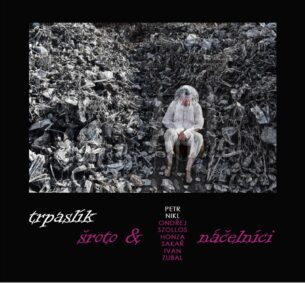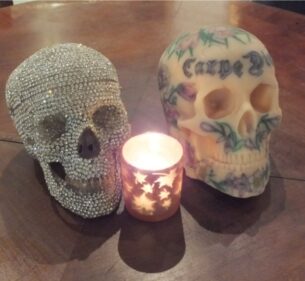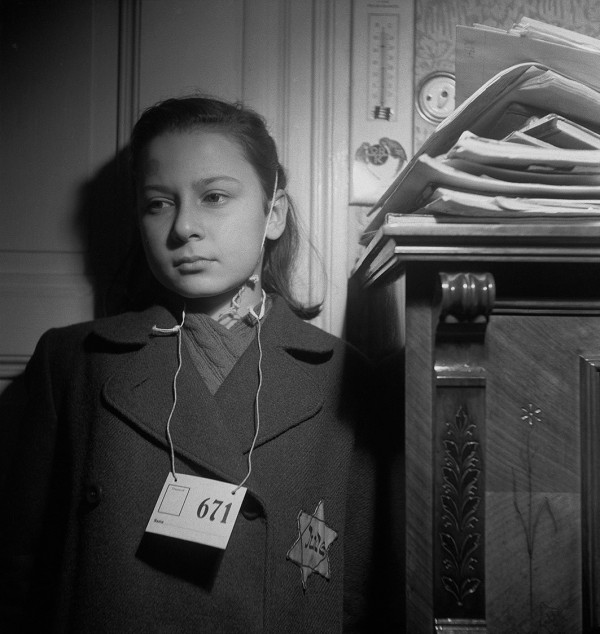Jan Lukas
Jan Lukas: LIDÉ 1930 – 1995
(18. 8. – 6. 10. 2015)
kurátorka: Nadia Rovderová, ve spolupráci s Helenou Lukas
Artinbox Gallery, Perlová 3, Praha 1
VÝSTAVA JANA LUKASE KONČÍ UŽ 6. 10. 2015.
VZHLEDEM K NEUTUCHAJÍCÍMU ZÁJMU JE VÝSTAVA OTEVŘENA DENNĚ VŽDY OD 14 DO 18 H.
EXHIBITION OF JAN LUKAS ENDS ON 6th of October.
EXHIBITION IS OPEN NOW DAILY FROM 2 to 6 p.m..
Vstupné 50 Kč.
fotografie z výstavy k shlédnutí zde:https://www.facebook.com/media/set/?set=a.876872269052129.1073741870.100551130017584&type=3&pnref=story
Událost můžete sledovat a účast potvrdit zde:https://www.facebook.com/events/398756053664246/
Reportáž ČT o J. Lukasovi ke shlédnutí zde: http://www.ceskatelevize.cz/ct24/kultura/1562696-zivot-s-fotakem-na-krku-fenomenalni-jan-lukas-oslavil-100-let
Část článeku o Janu Lukasovi z Respektu 31/2015 (27. 7.)http://www.respekt.cz/spolecnost/jan-lukas-nedal-na-ameriku-dopustit
Před sto lety se narodil slavný český fotograf Jan Lukas (10. 8. 1915 České Budějovice – 28. 8. 2006 New York). Byl legenda, jeden z prvních tvůrců, zakladatelů české fotoreportérské tradice a humanitní fotografie. V jeho dokumentárních snímcích se odráží minulé století a lidé, kteří ho tvořili, v šíři a hloubce, jakou těžko nalezneme u jiného českého fotografa. Výstava „Lidé 1930 – 1995“ představuje dobu, kdy se tvořily naše novodobé dějiny, a to jak v Evropě, tak i v tehdejším Sovětském svazu či Spojených státech. Tyto černobílé snímky působí stále naléhavě i dnes, kdy hrozí, že opět zapomeneme a zopakujeme staré chyby…
Reknowned Czech photographer Jan Lukas was born one hundred years ago (August 15, 1915, Ceske Budejovice – August 28, 2006, New York). He was a legend, one of the principle founders of the tradition of Czech photojournalism and humanitarian photography. His documentary images reflect the 20th Century – and the people that formed it – on such a broad scale and to such depth that is hard to trace in the work of any other Czech photo-grapher. The exhibition „People 1930 – 1995“ presents the era during which our modern history was formed, not only in Europe, but also in the former Soviet Union and the United States. These black and white images maintain their significance to this day, when difficult times insist that we do not forget, lest we repeat our past mistakes…
Výstava u 100. výročí narození slavného českého fotografa.
JAN LUKAS: LIDÉ (1930 – 1995)
„Realita je natolik zajímavá, že k ní už nic nechci dodat, jen zaznamenat jsem ji vždycky chtěl.“
Jan Lukas
Lidé známí i bezejmenní. Slavní i obyčejní… Dívají se na nás ze snímků starých dvacet nebo až pětaosmdesát let. Autorem je český fotograf, kterému by letos v srpnu bylo 100 let. „Je dobré žít déle, člověk se dočká věcí nečekaných. Mým přáním je vydržet ještě několik let, abych viděl alespoň pár dní třetího tisíciletí….“ napsal Jan Lukas v roce1995. Tento cíl si splnil – v novém tisíciletí prožil téměř celou „pětiletku“. Narozen v Českých Budějovicích za vlády Františka Josefa I., umřel v New Yorku v roce 2005 v požehnaném věku 91 let. Prožil život zajímavý, plný zvratů a překvapení.
Když se do středostavovské rodiny Lukasových v Českých Budějovicích v tehdejším Rakousku – Uhersku narodil syn Jan, Evropu už rok sužovala 1. světová válka. Klukovi byly tři roky, když válka skončila. Jeho rodný stát se rozpadl a Jan se stal občánkem nově vzniklého Československa. Nastala doba první republiky, dnes popisována jako doba klidu a poválečného rozvoje. Prezident T. G. Masaryk a jeho protipól Edvard Beneš vedli stát k prosperitě.
Tři roky po vzniku Československa se rodina Lukasových přestěhovala z Českých Budějovic do Prahy. Když bylo Janu Lukasovi 12 let, dostal od svého strýce dárek, který určil, kam se jeho život bude ubírat – svůj první fotoaparát. Pro fotografii se nadchnul, fotil lidi, krajinu, zátiší… Jako mladý talent vyhrál 6. cenu ve fotografické soutěži firmy Kodak. V roce 1932 byl přijat za nejmladšího člena legendárního Klubu fotografů amatérů na Nekázance a ocitl se tak ve společnosti fotografů jako byli: K. Hájek, V. Jírů, J. Jeníček, P. Koblic…. Inspirovala ho tvorba André Kertésze a Brassaïho, jeho snímky se začaly objevovat v prvních českých obrázkových časopisech (Eva, Ahoj na neděli). V letech 1935-36 se stal studentem vídeňské grafické školy, spolupracoval s tamějšími časopisy. V letech 1936-38 získal místo fotografa a kameramana u firmy Baťa ve Zlíně, seznámil se tak s A. Hackenschmiedem, K. Ludwigem, J. Sudkem a dalšími. Reklama Silnice zpívá, kterou pro firmu Baťa vytvořili spolu s A. Hackenschmiedem, získala Zlatou medaili světové výstavě v Paříži v r.1937.
Přesto ho fotografie lákala víc než kamera a jeho fotografická tvorba postupně získávala respekt. Stal se členem skupiny Sedm v říjnu (A. Paderlík, Z. Seydl, J. Liesler a d.), v říjnu 1939 spolu vystavovali v legendárním pražském Topičově salónu.
Koncem 30. let politická situace postupně přestává dávat podněty k optimismu. Lukas se rozhodl zaznamenávat společenské dění v ulicích. Od roku 1938 tak začaly vznikat záběry unikátního Pražského deníku, který se datoval až do r. 1965, kdy se Jan Lukas vydal do emigrace. Snímky zachycují nástup dvou totalitních režimů: nástup a porážku nacizmu a uchopení moci komunisty. Na snímcích se mihnou tváře z davu i tvůrci těchto dějin: T. G. Masaryk, Edward Beneš, Arcibskup Josef Beran, vrchní rabín českých zemí Dr. Sicher, Jan Masaryk, Generál Dwight D. Eisenhower… posléze vystřídáni Klementem Gottwaldem potažmo J. V. Stalinem.
V letech 1944-45 se k neutěšené politické situaci přidává nemoc – komplikovaný zánět kostní dřeně téměř připravil 30-letého Jana Lukase o život. Tato indispozice rovněž zabránila vzniku dovětku k slavné fotografii rodinných přátel Vogelových, které fotil v roce 1942 před transportem do Terezína. Když se povedlo Vendulce Vogelové a její mámě utéct z pochodu smrti a vrátily se do Prahy, chtěly se nechat opět vyfotografovat, ovšem Jan Lukas v té době zápasil o svůj život v pardubické nemocnici. Nicméně fotografie 12-leté Vendulky Vogelové před transportem se stala možná nejslavnější Lukasovou fotografií a obletěla svět. Na naší výstavě ji doprovází i fotografie, kde je Vendulka s rodiči. Tatínek se už z transportu nevrátil.
V roce 1946 se Jan Lukas oženil s Milenou Nocarovou. V roce 1947 se jim narodila dcera Jana, v roce 1950 dcera Helena.
Po komunistickém puči v r. 1948 zanikly obrázkové časopisy, které dávaly J. Lukasovi obživu, nicméně v r. 1949 se stal členem Svazu čs. Výtvarných umělců a směl tak působit ve svobodném povolání. Nacházel si skuliny v režimem sešroubovaných poměrech a povedlo se mu vydat několik fotografických publikací s různými náměty: děti, barokní architektura a sochařství, pražské židovské ghetto… Nadále se věnoval tématům lidí, krajiny, města…
V roce 1958 se na světové výstavě Expo 58 v Bruselu promítaly Lukasovy snímky v divadle Laterna Magica.
V r. 1962 byla v 10-tisícovém nákladu vytištěna fotografická publikace Moskva. Celý náklad až na pár exemplářů, byl poté kompletně zlikvidován. Přesto kniha vychází rok nato anglické verzi pro Spring Books, London.
Ke svým 50-tým narozeninám si Jan Lukas nadělil úspěšný, i když dramatický útěk s rodinou za svobodou. Jedenáct měsíců strávily v italském uprchlickém táboře, kde vznikl pozoruhodný fotografický dokument. V té době bylo v jeho pražském bytě ukradeno a zničeno na 200 000 negativů. Naštěstí ty nejcennější se mu za pomoci přátel povedlo zachránit.
V roce 1966 začíná Jan Lukas nový svobodný život ve vysněném New Yorku. V r. 1971 získává americké občanství.
Na Manhattanu, nejlepším novém domově, jaký si mohl vysnít, potkal staré i nové přátele: A. Hackenschmieda, A. Kertésze, J. Voskovce, M. Formana, V. Havla… Fotografoval dál, pracoval hlavně pro National Review (přes 100 titulních stránek) ale i pro další periodika. Fotografoval prezidenty Kennedyho, Nixona, Reagana a další politické a kulturní osobnosti… Paralelně pokračoval v práci na fotografických cyklech: Ostrované, Amerika podle Kafky, Pompeje / Manhattan…
V porevolučním roce 1990 se Jan Lukas opět podíval do Prahy. Nově vzniklá Asociace fotografů České republiky mu uděluje čestné občanství. V tomtéž roce opět fotografuje Václava Havla, tentokrát jeho návštěvu v Bílém domě a slavný projev v Kongresu Spojených států. Z roku 1995 pochází Lukasova poslední fotografie Václava Havla – tentokrát na pražském Hradě.
A zde se kruh uzavírá.
Nevídaná soustavnost, zvědavost, talent a pracovitost pomohly Janu Lukasovi vytvořit pozoruhodné dílo. Je z něho patrná empatie a laskavost. Na tu dobu neobvykle a průkopnicky využil expresivity, pohybu, jenž dodává život a dynamiku snímkům popisujícím dějinné události, které vytvořily dnešek… Je dobré se nad smyslem těchto snímků zamyslet i v dnešní době, kdy jsou opět aktuální slova: anexe, válka, uprchlíci… I proto jsme se při příležitosti 100. výročí narození autora rozhodli zapátrat v archivu a vyhledat snímky, kde se na postavách a obličejích lidí zračí i naše doba.
Nadia Rovderová, Praha, srpen / august 2015
engl:
Jan Lukas: People 1930–1995
Renowned Czech photographer Jan Lukas was born one hundred years ago (August 15, 1915, České Budějovice – August 28, 2006, New York). He was a legend, one of the principle founders of Czech photojournalism and of humanistic photography. His documentary images reflect the 20th century – and the people that formed it – on such a broad scale and to such depth that is hard to trace in the work of any other Czech photographer.
The exhibition “People 1930–1995” presents the era during which our modern history was formed, not only in Europe, but also in the Soviet Union and in the United States. These black and white images maintain their significance to this day and insist we do not forget, lest we repeat our past mistakes…
“Reality is so interesting that I want to add nothing to it; I just always wanted to record it.”
Jan Lukas
People both known and nameless. Famous and ordinary… They look at us from pictures that are twenty or even eighty-five years old. The author is a Czech photographer who would have been 100 years old in August of this year. “It is good to live longer, one sees unexpected things. My wish is to last several more years to see at least a few days of the third millennium…,” wrote Jan Lukas in 1995. This dream came true – in the new millennium he lived for almost five years. Born in České Budějovice during the reign of Franz Joseph I, he died in New York in 2005 at the ripe age of 91. He lived an interesting life, full of turns and surprises.
When Jan was born into the Lukas middle-class family in České Budějovice in the Austro-Hungarian Empire, Europe had been already plagued by the First World War for one year. The boy was three years old when the war ended. His native country broke up, and Jan became a citizen of the newly formed Czechoslovakia. This was a period of the First Republic, today described as a time of peace and post-war development. President T.G. Masaryk and his counterpart Edvard Beneš led the country to prosperity.
Three years after the founding of Czechoslovakia, the Lukas family moved from České Budějovice to Prague. When Jan Lukas was 12 years old, his uncle gave him a gift which determined where his life would lead – his first photo camera. He got enthusiastic for photography; he photographed people, landscapes, or still lifes. As a young talent he won sixth prize in a Kodak photographic competition. In 1932, he was accepted as the youngest member of the legendary Club of Amateur Photographers in Nekázanka and found himself in the company of such photographers as K. Hájek, V. Jírů, J. Hansel, P. Koblic, and others. He was inspired by the works of André Kertész and Brassaï; his photos began to appear in the first Czech illustrated magazines (Eva, Ahoj na neděli). In the years 1935–1936, he became a student of the Vienna School of Graphics and he collaborated with the local magazines. In 1936–38, he was appointed photographer and cameraman at the Baťa company in Zlín. Thus he got acquainted with A. Hackenschmied, K. Ludwig, J. Sudek, and others. The advertisement Silnice zpívá (Road Sings), which he created for Baťa along with A. Hackenschmied, won the Gold Medal at the World Exhibition in Paris in 1937.
Yet, he was attracted more by photography than by cinematography, and his photographic work gradually gained respect. He became a member of the art group Sedm v říjnu (A. Paderlík, Z. Seydl, J. Liesler, and others); in October 1939, they exhibited together at the legendary Topičův salon in Prague.
By the end of the 1930’s, the political situation would gradually cease to give incentives for optimism. Lukas decided to record social events in the streets. From 1938 thus began to emerge unique footage of Pražský deník, which was issued until 1965, when Jan Lukas went into exile. The pictures capture the emergence of two totalitarian regimes: the onset and defeat of Nazism and the seizure of power by the communists. In the images flash the faces in the crowd as well as the creators of this history: T.G. Masaryk, Edvard Beneš, Archbishop Josef Beran, Chief Rabbi of the Czech Lands Dr. Sicher, Jan Masaryk, Gen. Dwight D. Eisenhower, and so on, later replaced by Klement Gottwald and J.V. Stalin, respectively.
Between 1944 and 1945, with the dismal political situation strikes in a disease – a complicated inflammation of the bone marrow almost took Jan Lukas, who was 30 years old then, his life. This ailment also prevented the making of a postscript to the famous photo of the family friends, the Vogels, who he photographed in 1942 before their transport to Terezín. When Vendulka Vogel and her mother managed to escape from the death march and returned to Prague, they wanted to have themselves photographed again, but at that time Jan Lukas was struggling for his life in the hospital in Pardubice. However, the photograph of the 12-year-old Vendulka Vogel before the transport became perhaps the most famous Lukas’s photograph and it went all around the world. At our exhibition it is accompanied by a photograph where Vendulka is with her parents. Sadly, her father never returned from the transport.
In 1946, Jan Lukas married Milena Nocarová. In 1947, their daughter Jana was born, in 1950, daughter Helena.
After the communist coup in 1948, the picture magazines that were Lukas’s source of income disappeared. However, in 1949 he became a member of the Union of Czechoslovak Artists and thus he was allowed to work freelance. Has would find loopholes in the situation tied up by the regime and he was able to publish several photographic books with various themes: children, Baroque architecture and sculpture, Prague’s Jewish ghetto, and others. He continued to be dedicated to the themes of people, landscape, and the city.
In 1958 at the World Expo 58 in Brussels, Lukas’s photos were projected at the theatre Laterna Magica.
In 1962, the photographic book Moscow was published in 10 thousand copies. After that, the whole impression except a few copies was completely destroyed. Despite that, the book comes out a year later in an English edition for Spring Books, London.
For his 50th birthday Jan Lukas gave himself a present in the form of a successful, although dramatic escape with his family to freedom. They spent eleven months in an Italian refugee camp, where a remarkable photographic documentary emerged. At that time, in his Prague flat almost 200 000 negatives were stolen and destroyed. Fortunately, he managed to save those most valuable with the help of his friends.
In 1966, Jan Lukas begins a new, free life in the dreamt-of New York. In 1971, he obtains American citizenship.
In Manhattan, the best new home that he could possibly dream of, he met both old and new friends: A. Hackenschmied, A. Kertész, J. Voskovec, M. Forman, V. Havel, and others. He continued to take photographs; he worked mainly for the National Review (over 100 front pages), but also for other periodicals. He photographed presidents Kennedy, Nixon, Reagan, and other political and cultural figures. In parallel, he continued to work on photographic series, such as Islanders, America after Kafka, or Pompeii / Manhattan.
In the post-revolutionary year 1990, Jan Lukas went back to see Prague again. The newly formed Association of Photographers of the Czech Republic awarded him honorary membership. In the same year, he photographs Václav Havel again; this time his visit to the White House and the famous speech in the U.S. Congress. The last Lukas’s photograph of Václav Havel dates to 1995 – this time at Prague Castle.
And here the circle closes.
Unprecedented continuity, curiosity, talent, and hard work helped Jan Lukas create remarkable work. It shows evident empathy and kindness. For that time, he unusually and in a pioneering way used expressiveness of movement, which gives life and dynamics to the pictures describing historical events that gave birth to the present day… It is good to contemplate the meaning of these images even today, when the words like annexation, war, or refugees are topical again. This is also why we on the occasion of the 100th anniversary of the birth of the author decided to search the archives and look for photographs where the characters and the faces of the people mirror even our time.
Nadia Rovderová, Prague, August 2015
Artinbox Gallery, Perlová 370/3, 110 00 Praha 1 – Staré město, tel.: +420 777 748 433, nadia@artinbox.cz, www.artinbox.cz
Otevřeno středa – sobota: 14 – 18 h.
FOTO: Jan Lukas: Před transportem, Praha, 1942



